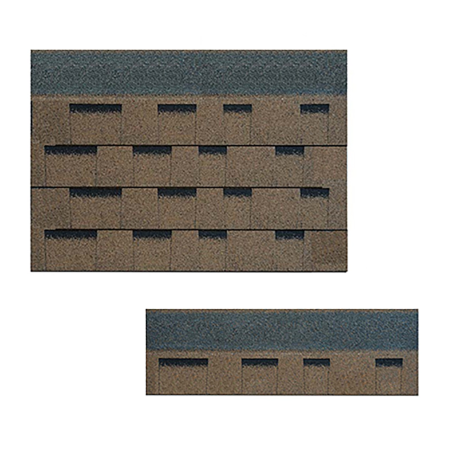
اکتوبر . 09, 2024 08:45 Back to list
types of clay roofing
Types of Clay Roofing An Insight into Benefits and Aesthetics
Clay roofing has been a popular choice for centuries, known for its durability, aesthetics, and energy efficiency. Many homeowners and architects opt for clay tiles due to their unique combination of beauty and performance. In this article, we will explore the various types of clay roofing, their characteristics, advantages, and the reasons they may be the perfect fit for your home.
1. Traditional Clay Tiles
Traditional clay tiles are perhaps the most recognizable form of clay roofing. They come in a variety of shapes, most commonly the flat, curved, or S shape, which has been used for centuries. These tiles are made from natural clay, which is molded and then fired at high temperatures to harden. Their durability and resistance to the elements make them highly desirable for both residential and commercial buildings. Traditional clay tiles have a lifespan that can exceed 50 years, making them a valuable long-term investment.
2. Terracotta Tiles
Terracotta tiles are a subclass of clay tiles that are known for their distinctive reddish-brown color, owing to the iron content in the clay used to produce them. These tiles are often used in Mediterranean and Spanish-style architecture, imparting a warm, inviting look to roofs. Terracotta tiles are not only beautiful but also naturally insulating, helping to regulate indoor temperatures. They are, however, more vulnerable to cracking compared to other clay roofing options if not properly maintained or installed.
3. Spanish Tiles
Spanish tiles are a variant of traditional clay tiles that have a unique, rounded design reminiscent of the roofs found in Spanish colonies. These tiles typically come in two shapes – the S shape and the flat shape. Spanish tiles are known for their ability to create a striking visual impact, adding character to any home. They are usually thicker than standard clay tiles, which enhances their durability, providing both strength and longevity.
4
. Mission TilesMission tiles are a traditional form of clay roofing tile associated with the Mission Revival architectural style. They are characterized by their barrel shape, designed to be placed in overlapping rows. This design not only adds to the aesthetic appeal but also enhances water drainage, making them suitable for various climates. Mission tiles can be found in various colors and finishes, from natural tones to glazed options, allowing for a wide range of customization.
types of clay roofing

5. Interlocking Tiles
Interlocking clay tiles are designed to fit together seamlessly, providing a secure and weather-resistant roof. This type of tile is often favored for its simplified installation process, as the interlocking nature eliminates the need for additional fastening methods. These tiles can mimic the look of traditional clay tiles but provide enhanced structural integrity and protection against wind uplift and water infiltration.
6. Advantages of Clay Roofing
Clay roofing offers numerous benefits that make it an attractive option for homeowners
- Longevity With proper maintenance, clay roofs can last for 50 years or more, making them a sound investment. - Aesthetic Appeal The unique colors and textured finishes of clay tiles add significant curb appeal and can increase property value. - Energy Efficiency Clay roofing provides excellent thermal insulation, helping to keep homes cooler in summer and warmer in winter, leading to reduced energy costs. - Eco-Friendly Made from natural materials, clay tiles are recyclable and have a lower environmental impact compared to synthetic roofing materials. - Fire Resistance Clay tiles are non-combustible, providing an additional layer of protection against fire hazards.
7. Considerations Before Installation
While the advantages of clay roofing are substantial, homeowners should also consider the weight and structural requirements of their roofs. Clay tiles are significantly heavier than asphalt shingles or other roofing materials, which may necessitate additional support during installation. It is recommended to consult with a professional roofer to assess the structural integrity of your home before proceeding.
Conclusion
Clay roofing combines timeless beauty with exceptional performance, making it a favored roofing option around the world. With various types available, including traditional clay tiles, terracotta, Spanish, mission, and interlocking tiles, homeowners have the flexibility to choose a design that complements their home's architecture. The durability, energy efficiency, and aesthetic appeal of clay roofs provide a compelling argument for their use in residential and commercial buildings, ensuring they remain a popular choice for years to come.
-
Moonlight White HIREFLE Granules with GPT-4 Turbo
NewsAug.02,2025
-
Premium Round Asphalt Shingles: Durable & Elegant Roofing
NewsAug.01,2025
-
Eco-Friendly Clay Tiles | AI-Enhanced Durability
NewsJul.31,2025
-
Durable Shingle Granules for Premium Roofs
NewsJul.31,2025
-
Stone Coated Metal Roof Tile-Roman Tile for Durable Roofing Solutions
NewsJul.30,2025
-
Stone Coated Metal Roof Tile-Wood Grain Tile for Durable Roofing
NewsJul.30,2025







